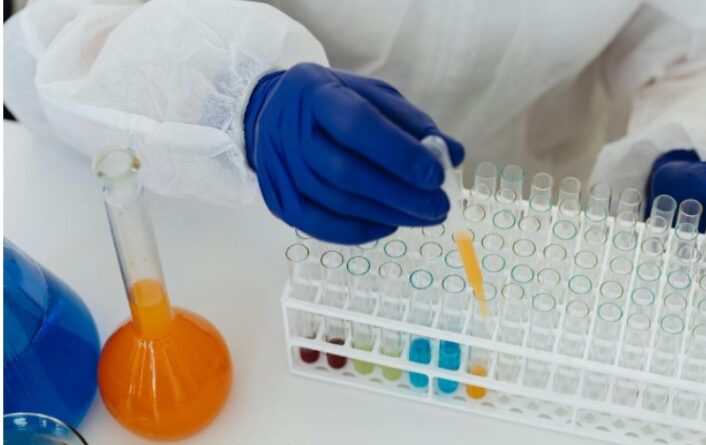What is TB-500? A Comprehensive Look at Thymosin Beta-4.
In Health and Wellness, TB-500 also known as Thymosin Beta-4 has begun to gain more attention as an important peptide for both health and wellness. It is well known that it has regenerative effects, and TB-500 is being examined primarily concerning tissue engineering, post-injury, and other physiological rehabilitation. This discussion addresses what it is, how it works, and what therapeutic benefits it has.
Image Source: Pexels
What is TB-500?
It is a synthetic manufactured form of peptide thymosin beta-4. This particular peptide occurs naturally in the body of humans and connective body tissues. Thymosin beta-4 is involved in the process of repairing and reconstructing damaged tissue. As such, it is involved in wound recovery and healing and movement of cells which are necessary for the performance of many important functions of the body systems.
The synthetic version was developed after researchers successfully replicated the peptide’s functions in numerous laboratory experiments. It began to investigate its potential healing function. This peptide has received interest due to its containing properties that encourage faster healing, lower inflammation, and encourage healing of tissues. Although it is still primarily studied in clinical trials, it has garnered significant attention because of its anti-aging and recuperative effects.
Benefits of TB-500
It seems to work at the level of specific biological mechanisms that are best suited for tissue regeneration. One of the main pharmacologic effects is its ability to induce cell migration. This assay measures the ability of cells to translocate to sites of injury, thereby facilitating the restoration of the muscular, tendons, and ligamentous tissues. As a result, it could help to accelerate the repair process.
It also seems to modulate processes of tissue remodeling, which encompass the formation of new blood vessels (angiogenesis). It is key for ensuring that oxygen and nutrients reach damaged tissues and so aids in the repair process. Angiogenesis is very important in conditions where there is a need for the replacement of damaged tissues including post-injury and post-surgical procedures. In addition, it has been reported to lower inflammation. Chronic inflammation is detrimental to the body and interferes with healing processes in the long run.
Uses of TB-500
Multiple benefits of using it can greatly improve overall health. The notable ones are:
Tissue Regeneration: It is characterized as having the capability to help heal muscles, tendons, and ligaments. It enhances cell migration and collagen production, thereby enhancing tissue regeneration, and would be helpful to recovering patients.
Improved Flexibility and Mobility: It could also be ideal for improving flexibility for people with chronic injuries, stiffness, or have difficulties with motion. With new tissues forming and capturing collagen, inflammation would lessen and motion would increase improving comfort.
Inflammation Reduction: It is efficient in dealing with great issues such as chronic inflammation, common in numerous health problems such as musculoskeletal injury or inflammatory diseases. It provides reduced pain and swelling due to its antagonistic effect on inflammation and at the same time aids healing of the affected tissues.
Potential in Hair Growth: While hair restoration may not be the envisaged use of TB-500, it did raise interest because of its supposed usefulness in hair growth. Some of the studies on it in the past have suggested that it may be helpful in the growth of hair follicles as it seems to be an area where new hair growth stimulation may be achieved.
TB-500 is often described as a powerful peptide in peptide therapy due to its abilities.
Cardiovascular Support: It may also prove useful in the area of heart health primarily due to its ability to invite new blood vessels to form. Through these ‘angiogenic’ properties, TB-500 may be helpful in ensuring optimal blood circulation and heart functioning.
TB-500 in Comparison to Other Peptides
Its popularity and importance in treating various conditions, there are also newer and other peptides available in the market. BPC-157 and GHK-Cu are examples of other newer peptides that share similar osmoreceptor stimulation properties. However, It is unique in that it stimulates cell migration and angiogenesis, while other peptides only do one of the two.
For instance, BPC-157 is best known for treating inflammation and repairing tissues, although it functions through different biological pathways by acting on growth factors. On the contrary, GHK-Cu is recognized for its influence on skin collagen and elastin primary synthesis but has no such effect on TB-500 like vasculature stimulating effects.
What makes it stand out from all other peptides is that it can enhance cell migrations and even new blood vessel formation which can increase its usage in the improvement of many body functionalities. With this transplanting ability to boost the healing and regrowth of damaged tissues, it puts TB 500 rhyme among the best peptides for people looking to up their recovery processes and have a better life.
The Future of TB-500 in Health and Wellness
The applications of it seem to be increasing with time as more people start studying it. Similar to it, there is also a lot of attention being given to the applications of steroids and how they increase mobility and reduce inflammation. But with more studies, many more therapeutic options will likely come out as well.
The peptide’s role in making blood veins spread allows it to be used in areas where blood flow is poor or where tissues are injured. Moreover, touching areas like hair loss or even cardiovascular health makes TB-500 in a medicinal way quite broad and promising at the same time.
Conclusion
TB-500, or Thymosin Beta-4, is something new and exciting peptide that has a chance of becoming an important peptide in the area of health and wellness. It is trusted for its tissue repair and inflammation reduction ability and for enhancing the bending and turning of joints for improved mobility.
Reference: PubMed

